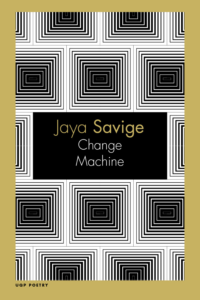 Change Machine
Change Machine
by Jaya Savige
UQP Press
ISBN 9780702262869
Reviewed by J. C. MASTERS
This is what happens when you binge
on beauty: eventually the orgy kills
you[.]
(‘The Roses of Heliogabalus’, 19)
If you’ve ever sat in on a literature class, at some point you may have heard someone mention Charles Baudelaire’s description of modernity from The Painter of Modern Life (Le peintre de la vie moderne,1863). His essays are often quoted when describing the transition that Europeans in the 19th century underwent, from functioning as a primarily agrarian society to one that depended on industry and embraced new technology built on principles of speed and transition. Baudelaire defined modernity, and the new sense of ‘being modern’, as “the ephemeral, the fugitive, (and) the contingent”, and suggested that instead of looking to the past for guidance, individuals should embrace the “transitory, fugitive element” of modernity.
Fast forward a little over 150 years later, and though we live in a very different world to the one he described, Baudelaire’s words are still appropriate for describing the sense of fleeting impermanence and rapid, unceasing change that our world tends to impress on its occupants. I am reminded of this when I first open Change Machine by Jaya Savige; from its opening to its conclusion; it is transformation of the self and world that carries Change Machine through to its end. The unevenness and dense patchwork of Savige’s poetry, spread across four chapters titled ‘Mean Time Between Failures’, ‘Biometrics’, ‘Hard Water’ and ‘There There’, results in a deliberately kaleidoscopic collection that depicts the subjective individual at the heart of the world’s flux. At times quietly reflective, and at other times wry and snarky, Change Machine is the story of a stone navigating an ocean; mired in sand but bent and smoothed by the waves outside its command.
Savige’s poetry chronicles the impact of various forces that determine the shape of individual experience. There are moments of both tranquility and motion, interspersed with a variety of referential signposts that assist in orienting the reader in space and time. Many of Savige’s references are specific to his own experience, though others who grew up in Australia in the 80s and 90s will recognise various cultural touchstones, such as his suggestion that ‘For a stack of platypus at the corner store,/Pac-Man was our minotaur’ (‘Études’, 18). Mentions of poetry, literature, art, science and history abound: ‘Rimbaud in Salatiga’ (7) borrows from T.S. Eliot’s ‘The Hollow Men’ (1925) and begins: ‘This is how the world ends/with strange foliage, ficus and tamarinds’, while ‘a pissed-off Apollo, deciduous Daphne’ mix in ‘Wingsuit Lessons’ (87-89). References pulled from a Western cultural canon mix with modern Australia (‘I interrupt one of the Maroubra boys/to mock his neck tattoo of Ouroboros’ (‘Inferno’, 29), while poems such as ‘The Keeper’ (30) recount aspects of the years Savige spent in London and overseas. However, though the allusive signposts pile almost galette-like on top of each other, it feels like Savige does this intentionally (and as deliberate distraction) while the paradoxical permanence of memory eddies underneath, accentuated by winking jabs at himself and others:
‘The number of fools is infinite,’
replied the man from Eccles Street,
Augustine
Ecclesiastes,
but not the famous bit about there being nothing new under the sun.
(‘Coloratura’, 94)
It is as though Savige is challenging the reader not to be carried away by his nods to NASCAR or James Joyce (‘the man from Eccles Street’ references Leopold Bloom, the protagonist of Joyce’s Ulysses) but to ride the wave through to the moments of stillness. Closer to the end of his collection, ‘Coloratura’ lists a number of pop culture moments connected by semi-colons (‘Kylie’s hotpants; Dame Joan’s coloratura; Angus Young for mooning Illinois; Michael Hutchence’s death by autoerotic asphyxiation; [etc.]’) heavily struck through with a black line, suggesting the pieces that make up a life, though coloured by these moments and cultural memories, are not defined by them.
Change Machine is self-reflexive and playful. Savige is proficient and impish in his flirtations with language, and uses cultural markers as entry points into a poem such as the delightfully named ‘Bach to the Fuchsia’. His musing on childhood favourite The NeverEnding Story in ‘The Nothing’ uses the movie’s idea of the creeping, all-encompassing Nothing to describe the sense of alienation that has become attached to modern life as perhaps its most infamous condition:
Compared to the Nothing that is nowhere
yet engulfs all Fantasia
in The NeverEnding Story, all other celluloid villains
a child encounters seem vanilla:
none of Scar, the Queen of Hearts, Cruella de Vil,
Sid Phillips, Voldemort, Vader or Jabba
comes close to its sublime incomprehensibility
There are echoes of Wallace Stevens’ poem ‘Snow Man’ (1921), which concludes ‘For the listener, who listens in the snow,/And, nothing himself, beholds/Nothing that is not there and the nothing that is.’ ‘Snow Man’ is often discussed in terms of its perspectivism, which suggests that the only way to know reality is through the subjective experience of the self. Savige compares the Nothing from The NeverEnding Story (‘He knew the void, the gist of entropy’) to other ‘celluloid villains’ that are ‘vanilla’ in comparison to the movie’s ominous emptiness. Celluloid means ‘of film’ and references motion pictures and cinema, but the word also implies the one-dimensionality of these childhood monsters; they are single cells in comparison to the multicellular organism of the Nothing. The ‘sublime incomprehensibility’ of ‘the void, the gist of entropy’, is subsequently seen everywhere by the speaker of the poem, once he recognises the Nothing as both existential chasm and the threat of the self’s eventual end that haunts awareness (‘Then you saw it everywhere: in Villon and Nin;/Boundary Street; an episode of Friends; a wind chime;/and later still, in the car park of a crematorium,/say, or a clinical waste disposal bin.’)
The reference to his partner’s miscarriage, explored in more detail in poems like ‘The Cobra of Djemma el Fna’ (5) and ‘Tips for Managing Subsidence’ (70-71), is just one of the many bodies that permeate Savige’s work. He explores human bodies, bodies of water and land, bodies of work, and Savige’s own, but for all the larger and various embodiments of subjectivity, Savige’s poetry manages to create a sense of enduring intimacy that crosses the divide between author and reader. His ode to the humble spork (‘for you were always a bit like me, spork: a half-caste gook, an incendiary Spock’) in ‘Spork’ (78-80) discusses the impact of his half-Asian heritage while growing up in Queensland:
beamed in by genetic monsoon and plonked down hard
onto a patio on an island
in Queensland
that gave the most rousing ovation to One Nation;
a slap in Pop’s face,
who’d fought in the Pacific;
up-close physical proof of the peril, produced
in his own
daughter’s womb.
The distance created in this poem by praising ‘the cutlery of choice in war and prisons’ means that it is heavy with the unsaid. At times, what is unsaid has a more impactful presence in Savige’s collection, due in no small part to the motley of images he collects and arranges. The postmodern proliferation of signs and symbols has tended to function as a postmodern challenge to dominant Western narratives that prioritise a narrow group of ‘classics’ as markers of high culture. Savige aptly reconstructs a vision of what Jean-Luc Baudrillard termed the ‘hyperreal’; an endless generation of images that are copies of copies, while losing any connection to an original. Within hyperreality, experience is composed of auto-referential exchanges and ‘the murderous power of images’ kills any existence of reality beyond that which exists in the reference itself. Savige’s observation in ‘Coloratura’ (94) that there is ‘nothing new under the sun’ (referencing a passage from Ecclesiastes 1:8-10) reveals his postmodern playfulness as deliberately and tightly constructed.
However, one of the effects of Savige’s pastiche is that the iconoclastic assortment of references become just that; pieces of a larger poetics, all equal in allegorical value. In a way, it artfully composes a patchwork quilt of Savige’s life where we are able to take in the cacophony of colour all at once, but it also means that things that could afford to stand out are given the same hierarchical and referential power as Pac-Man and the Maroubra boys. I speak more specifically of Savige’s use of Indigenous place names in poems such as ‘Mirrigin’ (15):
I wish I could say precisely where Yugambeh
ends and Bundjalung begins, but we only had the crumbs
of Indigenous history, local or otherwise, at school.
We were flat out distinguishing Mayor Quimby
of The Simpsons from Chief Quimby
of Inspector Gadget. And sometimes I feel like a fool
or a fraud when I speak with Sam or Tara June, or anyone
really, about the place I come from, grew up in.
While the prophesied effect of hyperreality is that originals are decimated, there is little acknowledgment within Change Machine that this is what is actually taking place, despite the poetry’s strong Antipodean flavour. The original First Nations inhabitants of Australia are given cursory acknowledgment within the collection, and while this lack of presence is noted within ‘Mirrigin’ as being symptomatic of their wider absence in Australian history and culture (which tends to be circumscribed to the last 200 years or so), without greater signposting of significance, Australia’s black history sinks into Savige’s sea of symbolic exchanges.
As the collection evolves, it seems to slow down while simultaneously speeding up. Individual poems, sentences and stanzas get longer, while the flickering rush of images creates a familiar medley. Though it becomes obvious that this is an extended march through the bureaucratic culture machine, Savige’s own self is a constant presence. Quotes from popular songs, newspapers, literary criticism, and 18th century journals dot the pages, while Savige’s ‘Notes’ at the back of Change Machine helpfully explain some of his more obscure references. (This, perhaps, is a kind nod to his audience; one cannot best navigate modern life without advice and assistance from those better-travelled.) Stylistically, longer exhalations formed from luxurious sentences (‘behind the wreck, further up, where the angelfish are flashing/in and out of the rust, and the moon wrasse nose you while egg-hunting’ (‘The Offing’, 32) are counterposed with the crisp staccato of lean word-towers in poems like ‘Work Do’ (21), that emulate the mechanised clicks of clock-in clock-out employment:
Trending
agile
upticks
of rain
ping off
the swish
marquee,
actioning
the specifics
of some
committee
minute
on workflow
policy.
By the fourth chapter, ‘There There’, structures are breaking down and we are left with the self-reflexive pieces of a poetry under pressure. There are hints of this earlier within other chapters; ‘Her Late Hand’ (41) in ‘Biometrics’ splits the poem into two columns and you can read it holistically left to right, or take each column separately. Alone, the right-hand column begins:
wiring hadn’t
handwriting
din, gnat whir
and writhing;
hard tin wing
thawing rind.
nth drawing I hart,
winding…
Savige’s reflections accelerate until they are mostly held together by the community of meaning he has built for us. It is as though language, so ably wielded throughout, has succumbed to the demands placed on it. Context is your map to rebuilding these pieces, which also reflects the necessity of context when navigating the pictures and sounds of an urban environment. In Change Machine, language is simultaneously a vehicle to and obstructor of meaning. In the right-hand column of ‘Her Late Hand’, the final stanza reads ‘rh, giant wind/grand within/writing hand’, which asserts the place of the subjective individual in communication. The emphasis on phonetics helps give the poem a concreteness; words are Savige’s building blocks of meaning but also symbolically function as the divide between the sign and signifier – a divide which is echoed in the distance between image and missing referent, and the Self and the Other. This is highlighted in poems such as ‘Stagger Lee at Her Majesty’s’ (82-83):
Like salacious columnists
we’re in bits just witnessing
‘The Body’ sluice
through a bank of tail
ored suits, still
hot as lime juice
on a torn
cuticle, to blithely dis miss the crab mousse–
two decades on from the all-out
fluorescent assault
of her work for Diet Coke in ‘88.
…
My patois is a heady mix of am
nesia, em
and capital
Savige’s ‘patois’ is demonstrated moreso as the collection wraps up. Change Machine ends with the phrase ‘ache hoof hour crate cram shelled wren,/hand haul off there shelled wren to calm’ in ‘Cinemetabolic’ (98-99), though interpretation becomes possible when surveying similar phrases like ‘you shld quit it at ones’ and ‘–yelp, use gassed it–’, which offer clues into his phonetic play. His recollections of an Australia where ‘Chook, Buddha, Wayne, Stink and Rod/rarely conferred/and even when they did they talked/around it:’ (‘Hard Water’, 63) communicate the place- and time-specific role of memory in building the self, which is a self that exists in the physical body as much as the mind. In trying to reconcile the cultural imbalance that has historically privileged mind and reason over the feeling, living body, Savige uses language’s physicality through sound and structure to underscore the importance of the body as the central arbiter of modern experience.
Ultimately, we, as much as the cavalcade of modern life, are change machines. Bodies penetrate all levels of Savige’s poetry in the guise of machines, and machines in the guise of bodies. After the cascade of references ends, we are left with the collection’s exquisite humanity and colour, which are the quiet skeletons in the densely allusive works. Savige’s Change Machine is an extended meditation on the influence of history and culture on the self, while also skilfully exploring how individuals cut across the din of modern life to embrace moments of personal connection.
J.C. Masters is a postgraduate student in English Literature at University of Sydney. She tweets @_jclyons
 Brenda is a writer and artist of Wiradjuri and British heritage. She has written three poetry collections and her next, ‘Inland Sea’ will be published in 2021. Her poems and reviews appear in edited anthologies and journals, including Australian Poetry Journal, Overland, Quadrant, Southerly, Westerly, Plumwood Mountain and Best Australian Prose Poems 2020 (MUP).
Brenda is a writer and artist of Wiradjuri and British heritage. She has written three poetry collections and her next, ‘Inland Sea’ will be published in 2021. Her poems and reviews appear in edited anthologies and journals, including Australian Poetry Journal, Overland, Quadrant, Southerly, Westerly, Plumwood Mountain and Best Australian Prose Poems 2020 (MUP).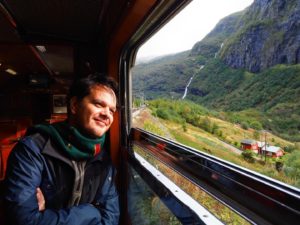 Šime Knežević was born in 1985 and lives in Sydney. His debut poetry chapbook, The Hostage, was published by Subbed In. His poetry has appeared in Ambit (UK), Australian Poetry Journal, Cordite Poetry Review, Going Down Swinging, Magma (UK), SAND (Germany), Signal House Edition, The Stockholm Review of Literature, and elsewhere.
Šime Knežević was born in 1985 and lives in Sydney. His debut poetry chapbook, The Hostage, was published by Subbed In. His poetry has appeared in Ambit (UK), Australian Poetry Journal, Cordite Poetry Review, Going Down Swinging, Magma (UK), SAND (Germany), Signal House Edition, The Stockholm Review of Literature, and elsewhere.  A History of What I’ll Become
A History of What I’ll Become  Change Machine
Change Machine A Kinder Sea
A Kinder Sea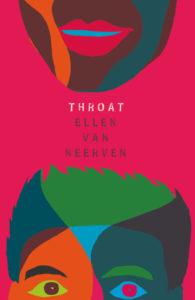 Throat
Throat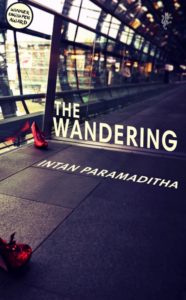 The Wandering
The Wandering  Petra White lives in London. Her most recent book is Reading for a Quiet Morning (Gloria SMH 2017).
Petra White lives in London. Her most recent book is Reading for a Quiet Morning (Gloria SMH 2017).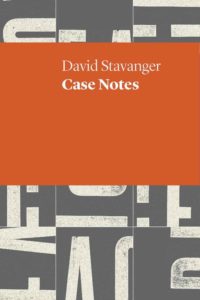 Case Notes
Case Notes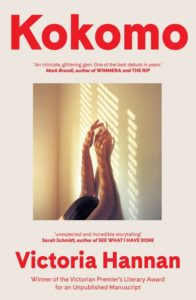 Kokomo
Kokomo